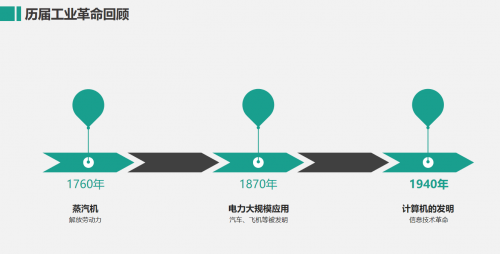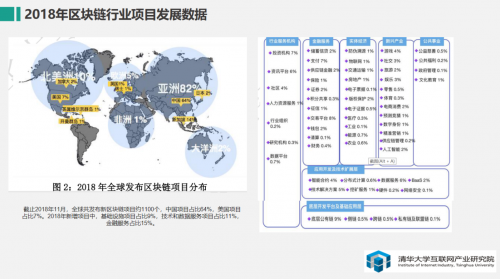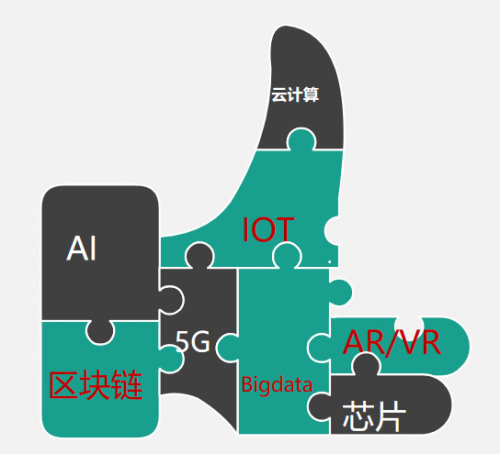Viewpoint | Blockchain is a digital social governance system for AI smart new species
Author: Research Institute of Tsinghua University, part-time Internet industry researcher Cheng Xiaoyong
Source: Today China Network
The great scientist Nikola Tesla said that the emergence of new technologies is for the future, not the present.
Blockchain and programmable digital currency are collaborative, distributed, and financial social governance systems for smart machines. This society is a digital economy society, not a human reality society; its finance, economy, and collaboration based on code trust. And the governance system will be developed in tandem with the existing financial, economic and political systems of mankind.
- Bitfinex parent company submits a search application to the US court, intending to recover the frozen 880 million US dollars
- The World Internet Conference is coming. I found a blockchain company in Wuzhen.
- In the questioning, how does Libra's currency basket fall? Single anchor instead of integrated anchoring?
The blockchain is not like some anarchists who can subvert the existing system of human organizational structure, and regulators and society do not have to worry too much about the adjustments brought by the blockchain.
Blockchain technology will provide production relationship support for the next generation of disruptive technologies, AI, IOT, Big Data, Cloud Computing, 5G and AR. The final physical form of these technologies is the new species of intelligent machines. They have their own ideas, think, calculate, trade, and they also need to trade, but also need incentives and collaboration.
To understand the future shape of the blockchain, we need to review the previous industrial revolutions.
The first industrial revolution was born around 1760. It was represented by the invention of the steam engine and liberated human hands;
The second industrial revolution was born around 1870, and represented the invention of electric power and automobile aircraft, liberating the human feet;
The third industrial revolution was born around 1940, symbolizing the invention of computers and communication technologies, liberating people's ears and eyes.
The next industrial revolution, the fourth industrial revolution we are experiencing, is developing technologies including: blockchain, AI, IOT, cloud computing, big data, chips, AR, the fourth industrial revolution, will be liberated Human brain

What is the current state of development of these cutting-edge disruptive technologies?
AI artificial intelligence industry: AI has become the key development direction of China-US family strategy, but it is still in a very early stage due to the problem of big data data privacy protection, data incompatibility problem, MPC multi-party security computing problem, and slow algorithm evolution. ;
Big data industry: After the third industrial revolution, the Internet has a huge amount of user data, but data sovereignty issues, privacy protection issues, data transaction without standards and security mechanisms are seriously limiting the development of the industry;
IOT industry: subject to the development restrictions of 5G, AI, chip and other industries, the Internet of Things industry has been in a state of slow development;
Chip industry: The existing mainstream chip CPU has reached the physical limit, and the ACIS dedicated chip is expensive and cannot be modified once it is formed. From the manufacturing, design, instruction, operating system, etc., the next generation of innovation is urgently needed;
Cloud computing industry: Large-scale centralized cloud computing centers have already experienced bottlenecks, and new technologies such as edge computing are limited by chips, 5G, blockchain and other other industries that are immature;
Blockchain industry: still in the infrastructure stage, the public chain field is basically mature, and the cross-chain and uplink technology is still in the development stage. It has begun to be applied in the decentralized finance sector, but legal and financial risks have become new challenges.

Let us first focus on the development status of the blockchain industry.
According to the "Tsinghua University Internet Industry Research Institute's 201 Blockchain White Paper", in the 2018 global new blockchain project, infrastructure and technical service projects accounted for more than 20%, and financial services accounted for 15%. Among the new projects in 2018, Chinese projects accounted for 64% of the total, and are rapidly catching up with the United States.

It is worth mentioning that:
1. The research on the underlying technology of China's blockchain lags behind that of the United States. Technology engineering leads the United States. The blockchain infrastructure still lags behind the United States in general, and the development of blockchain applications leads the world.
2. The illegal fund-raising and money-laundering activities in the name of blockchain technology have occurred;
3. The internationalization process of China's blockchain enterprises is developing rapidly. Because of the global nature of blockchains, Chinese blockchain enterprises are more or less internationalized to varying degrees;
4. The attitudes of Chinese regulators and Chinese society on digital currency are generally controversial, while the United States holds an open regulatory policy;
It can be seen that the blockchain industry has many problems to be solved in addition to the technical aspects of the next generation of new technology industries. The regulatory issue is a major challenge. However, in this year's report on the work of the Chinese government, the Prime Minister proposed to cautiously supervise new technological innovations, and General Secretary Xi mentioned in a state visit that the challenges brought by governments to the development of new technologies need more tolerance. And the community is also actively calling for the regulator to open the sandbox.
Blockchain technology provides production relationship support for other next-generation technologies
The exact definition of the blockchain is distributed accounting technology, which is a technology for the future. Since his duties are financial accounting duties, and the combination with other technologies, its value will not be highlighted; and the next generation of emerging technologies AI / big data / cloud computing / Internet of Things / 5G, etc., in addition to close integration with each other, after the Internet of Everything Collaboration and reward incentives between machines and machines will not be possible without the use of blockchain technology as a support for production relations between intelligent species. Ultimately, the integration of these technologies will complete the fourth industrial revolution and eventually liberate the human brain.
The fourth industrial revolution = blockchain + AI + big data + cloud computing + Internet of Things + 5G + chip + AR / VR, these technologies will be integrated and developed, complement each other, and finally form an integrated solution. In these disruptive technologies, the blockchain and chip industries are infrastructure, the chip industry provides computing power for next-generation technologies, and the blockchain provides production-side support for next-generation technologies. China's understanding of the importance of the chip industry is very high, and the awareness of the importance of the blockchain industry is urgently needed.
Let's take a look at how the various technologies will be solved after the integration of various technologies. As a technology responsible for production relations, we focus on the analysis of blockchains.

1 blockchain + AI + big data + next generation chip + edge calculation
The blockchain homomorphic encryption algorithm ensures that ciphertext data can also be calculated by AI, solving data privacy and ownership issues;
Blockchain MPC multi-party security computing can ensure multi-party collaborative computing based on the security of big data providers and artificial intelligence algorithm providers, share computing results, and use blockchain programmable digital currency, smart contracts, and incentive distribution. . We all know that artificial intelligence companies lack data and algorithms. Why can't they share data and algorithms? There is a lack of a secure technical allocation mechanism.
Next-generation chip +5G+ edge calculations ensure that calculations are processed and responded in a timely manner.
2 blockchain + big data
The blockchain hash function ensures that data can be discovered without tampering or tampering, thus ensuring the authenticity of the data;
Blockchain asymmetric encryption ensures data desensitization and prevents disclosure of personal privacy data exposure;
Blockchain zero-knowledge proof ensures the verifiability of encrypted data;
Smart contracts and programmable digital currencies ensure that big data transactions can be automated and value exchanged;
3 blockchain + cloud computing +5G
The blockchain pass incentive mechanism and cryptography related algorithms provide unlicensed and secure access and exit automatic incentive mechanisms for the evolution of centralized cloud computing centers to edge computing, and use technology to release social computing resources;
4 blockchain + AR / VR + 5G + next generation chip + edge computing
Blockchain technology can verify the authenticity of identity in the VR/AR world, and smart contracts can determine and trade their assets;
5 blockchain + internet of things +5G
In the future, everything is connected, and everything has a brain. The final result of the fourth industrial revolution will be marked by the maturity of new intelligent machine species. Intelligent machine species will coexist with humans. The blockchain point-to-point technology protocol, smart contract, programmable digital currency technology, and the Internet of Things and 5G will enable intelligent machine species: equipment networking, data, data assetization, asset trading, and transactional financialization. Intelligent machine species will collaborate on data transactions through blockchains, MPC algorithm collaboration and digital currency incentives.
Blockchain is a kind of distributed accounting technology based on code trust. The consensus mechanism generated by code trust brings a new monetary system and financial system. Obviously, this code-based trust system is not Prepared by humans composed of cells, but a new system of social management of intelligent machines, such as collaboration, distribution, and finance, prepared for new intelligent machine species that are also composed of code.
This code-based trust builds a financial, economic, collaborative, and governance system that is prepared for the future of intelligent robots. It will develop in tandem with the existing financial, economic, and social governance systems of the human world.
We will continue to update Blocking; if you have any questions or suggestions, please contact us!
Was this article helpful?
93 out of 132 found this helpful
Related articles
- The currency will be added to the legal currency transaction pair. The first supported legal currency is the Russian ruble.
- Exclusive interpretation | Tencent blockchain released 3 editions of white papers in 3 years, these landing applications are the most concerned
- Pick up IEO! Can Sthum's new gameplay at Bithumb Global Station create the next wave?
- After the 18 million bitcoins were dug up: these “18 million” milestones are also worth remembering
- Soul torture: Is Bitcoin or Bitcoin "Writing" on Wall Street?
- PlusToken launches a large number of chain transactions again, transferring 20,000 ETH
- What if the bitcoin didn't accompany us to the end?





